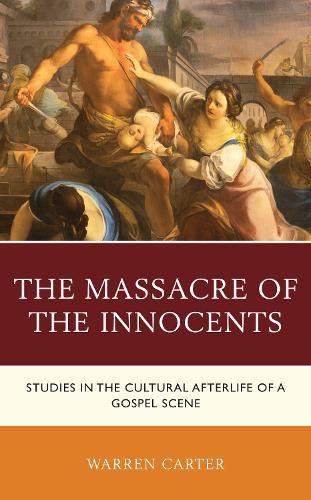Readings Newsletter
Become a Readings Member to make your shopping experience even easier.
Sign in or sign up for free!
You’re not far away from qualifying for FREE standard shipping within Australia
You’ve qualified for FREE standard shipping within Australia
The cart is loading…






In The Massacre of the Innocents: Studies in the Cultural Afterlife of a Gospel Scene, Warren Carter examines some fifty instances of the interpretation of the Matthean "Massacre of the Innocents" (Matt 2:16-18). He emphasizes the agency of interpreters, who in their particular contexts and media, "think with" the shocking Matthean scene to address the often-tragic circumstances of their audiences. He argues throughout that the structure of the Gospel scene facilitates this "thinking with." The scene is structured as a triad of power relations with a tyrant (Herod), victims (infants and parents), and violent means of tyranny (the massacre). Interpreters use this triad of power relations to identify tyrant/s, victims, and means of tyranny in their own situations. Carter illustrates the use of this triad of power relations across two millennia, in numerous socio-political contexts, and media as diverse as sermons, images, poems and hymns, dramas and festivals, films, novels, Christmas carols, and Children's Bibles.
$9.00 standard shipping within Australia
FREE standard shipping within Australia for orders over $100.00
Express & International shipping calculated at checkout
In The Massacre of the Innocents: Studies in the Cultural Afterlife of a Gospel Scene, Warren Carter examines some fifty instances of the interpretation of the Matthean "Massacre of the Innocents" (Matt 2:16-18). He emphasizes the agency of interpreters, who in their particular contexts and media, "think with" the shocking Matthean scene to address the often-tragic circumstances of their audiences. He argues throughout that the structure of the Gospel scene facilitates this "thinking with." The scene is structured as a triad of power relations with a tyrant (Herod), victims (infants and parents), and violent means of tyranny (the massacre). Interpreters use this triad of power relations to identify tyrant/s, victims, and means of tyranny in their own situations. Carter illustrates the use of this triad of power relations across two millennia, in numerous socio-political contexts, and media as diverse as sermons, images, poems and hymns, dramas and festivals, films, novels, Christmas carols, and Children's Bibles.